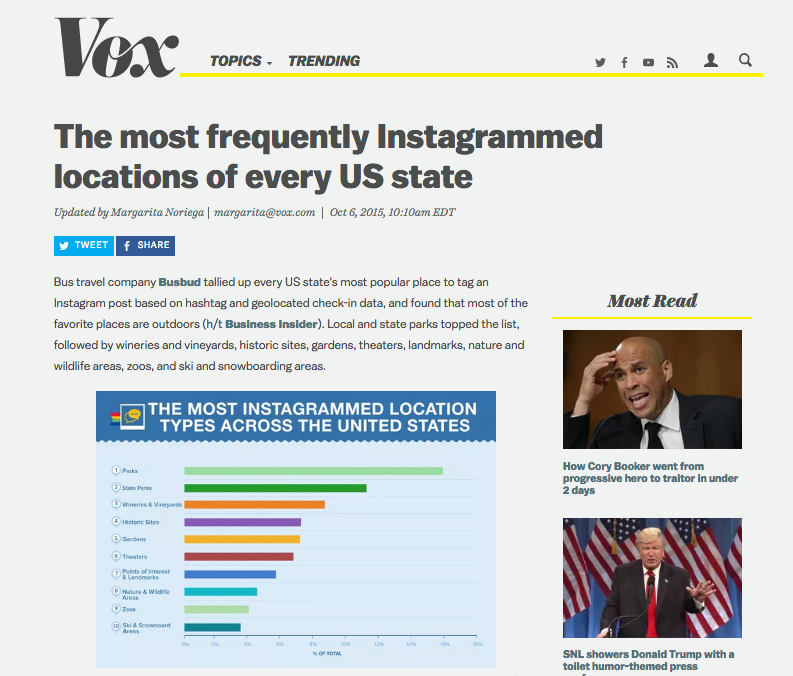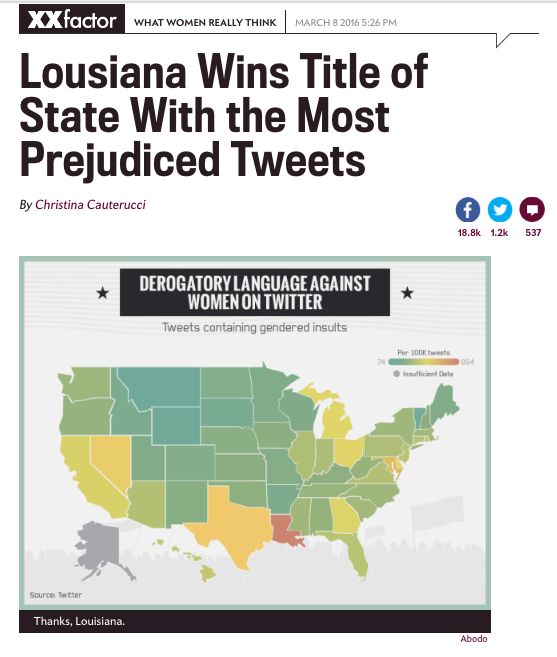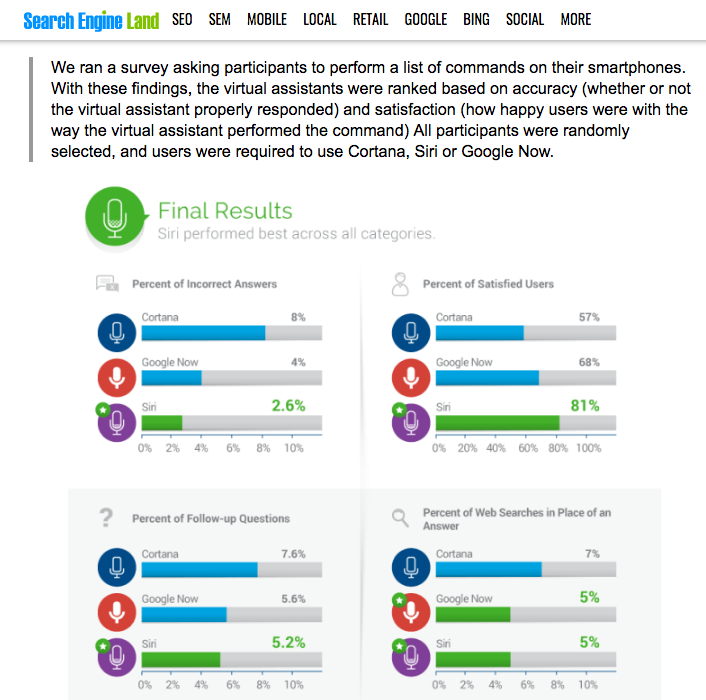The great thing about content marketing as a whole is its ability to achieve various marketing goals through different content strategies. From brand awareness to driving organic traffic to lead generation, tailoring your content to match your objectives is a must for ensuring your content doesn’t add to the noise by fulfilling the needs of your audience.
For marketers trying to achieve goals tied to increased brand awareness and higher search rankings, viral content becomes the ideal solution. Mass exposure through the free press and social communities not only benefits your brand by reaching and engaging a broad audience, but it does so through trustworthy and authoritative sources.
Within the past decade, several studies reveal consumers are much more inclined to listen to their friends and online peer reviews than traditional forms of advertising when it comes to making their purchasing decisions. Publisher coverage and social media advocacy have become the modern day word-of-mouth marketing channels, meaning campaign performance created with intentions of increasing brand awareness and organic traffic should be measured in the form of media mentions and social shares, among other metrics.
Taking this into consideration, my team at Fractl was inspired to analyze our own successes to see how we could replicate them in future work, using media mentions and social shares as performance metrics. After scanning through nearly 350 of our recent content campaigns, we pinpointed three characteristics of content that earned the best-performing metrics for brand exposure.
Appeal to broad, tangential audiences for high-quality media coverage.
It goes without saying, to reach the broadest audience possible, your content must have broad appeal. For most industries, that may mean taking a tangential approach to your content ideation. Brainstorming content topics that literally tie back to your brand tremendously increases your team’s creative freedom to reach a general audience.
Looking at the most Instagrammed places in America allowed Busbud, for example, to execute a viral campaign that tied back to their industry– travel– but went beyond the narrow scope of their services within the travel industry of comparing bus ticket prices. The result was over 300 media coverage stories by both high-authority publications with general audiences like Vox and niche industry publishers like Travel + Leisure.

Regardless of the audience, earning high-quality coverage from the media to reach those audiences requires creating original content from credible data sources. Sources for the campaigns analyzed vary from government databases to mass social media scrapes to original data gathered from first-hand research, but the campaigns went beyond just regurgitating the data into a visually appealing infographic or concise blog post. Be sure to take a journalistic approach in your content by analyzing and highlighting the most compelling findings of the data that would prompt an emotional response by the audience– which leads to the next point.
Evoke an emotional response with controversial content.
By far, the emotional impact of the content is the greatest differentiator between the top-performing campaigns (in this study, those earning over 100 links) and lower-performing campaigns. One of the best ways to do so is to tap into the power of controversial content. Presenting polarizing ideas by experimenting with controversial content triggers an emotional response, but must it be done without alienating people or crossing not-so-clearly defined boundaries. It’s crucial to use credible data and to stay objective when presenting such controversial and sensitive topics in your content.
One of our highest performing campaigns of all time thus far focused on several extremely controversial, sensitive topics on social media: racism, sexism, and homophobia. Abodo analyzed over 150 keywords and the geolocations from hundreds of thousands of Tweets over the course of 18 months to pinpoint which states displayed the most prejudices online. The result was nearly 650 media mentions and over 67,000 social shares.

Shock, amazement, inspiration, and, as shown above, even disgust are emotions some of the highest performing content prompted. Further, research reveals evoking emotions falling under the anticipation and surprise segments of Plutchik’s wheel is extremely common in highly viral content. Using these strong emotional drivers allows content to resonate with audiences, motivating them to share it with their social circles.
Spark social discussions through rankings and comparisons.
Visual assets primed for social sharing is a driving factor in viral content, but the visual need not be an adorable cat video. Nearly all of the campaigns incorporated some sort of data visualization, and the top performing campaigns included visuals illustrating rankings or comparisons of the data. Polarizing ideas are best represented visually through ranking and comparison charts, which in turn help to spark online discussions.
By comparing the performance of the three most popular voice assistants in an original user study, Experts Exchange stirred emotions of devout smartphone users, leading to hundreds of media mentions and thousands of social shares. A side-by-side comparison of the results helped the campaign quickly convey the disparity in performance, sparking some heated social discussions among the tech community.

Since we live in a far from ideal world, there’s no magic formula for guaranteeing your next campaign is going to earn thousands of links, millions of social shares, and billions of views. That being said, virality is a matter of more than luck. Appealing to broad audiences through data-driven, emotionally impactful content is truly the key to earning high-quality media coverage and generating social shares, so don’t be afraid to tap into some tangential or controversial ideas when trying to brainstorm your next viral campaign.
About the Author
 Ashley Carlisle is a Brand Relationship Strategist at Fractl, a content marketing agency specializing in data-driven campaigns. She works alongside a team of creative strategists producing innovative studies on the latest industry trends.
Ashley Carlisle is a Brand Relationship Strategist at Fractl, a content marketing agency specializing in data-driven campaigns. She works alongside a team of creative strategists producing innovative studies on the latest industry trends.

